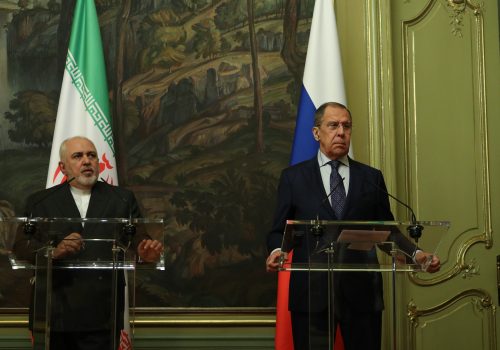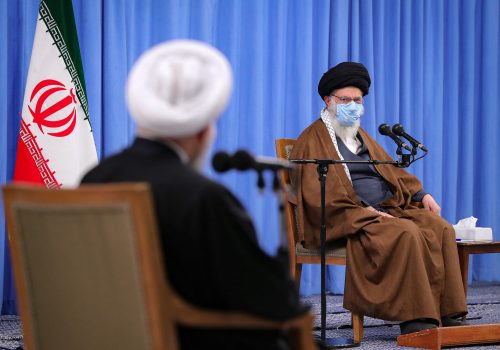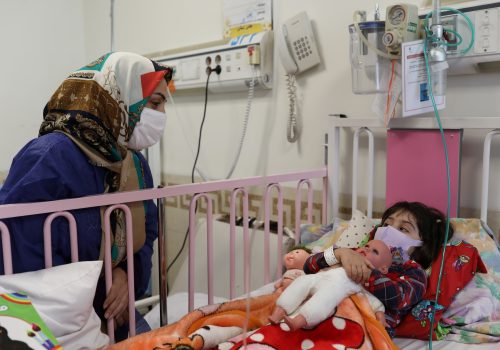Iran is actually reducing its weapons-usable uranium inventory
On December 1, 2020, the Iranian parliament passed a sweeping bill directing the Atomic Energy Organization of Iran (AEOI) to take a number of steps designed to garner attention from the incoming Joe Biden administration and to respond to the assassination of Iranian nuclear scientist Mohsen Fakhrizadeh.
Some of these steps looked quite ominous at first blush, but, in reality, do not have serious implications for starting a real Iranian nuclear weapons program.
One step that has attracted considerable media attention was a directive to start up a uranium metal factory. The legislation obliges the AEOI to inaugurate such a factory in Isfahan within five months after the ratification of the law. Although it is true that uranium metal can be used for nuclear weapons, other information provided by the Iranian ambassador to the International Atomic Energy Agency (IAEA), which monitors the country’s program, indicates that the uranium metal powder Iran is planning to make is for fuel for a research reactor that produces medical isotopes.
The impact of this project would actually be a reduction in the amount of enriched uranium Iran would have available for enrichment to weapons-grade levels.
Natural uranium mined from the earth contains less than one percent of the isotope uranium-235 (U-235), which is necessary for nuclear fission. It is converted by a number of industrial chemistry steps to uranium hexafluoride, a gas known by its chemical formula, UF6. This gas can be enriched to higher levels for various purposes. In the case of Iran, the enrichment is done by machines known as gas centrifuges that spin the UF6 at supersonic speeds, aiding a physical separation of atoms.
Iran enriches UF6 to two main levels—4 percent of U-235 for power reactors to make electricity and 19.9 percent to make fuel for a small research reactor in Tehran that the US provided in the 1960s. It’s worth mentioning that Iran used to sell 4 percent uranium to Russia before the US introduced sanctions in violation of the JCPOA.
Any enrichment less than 20 percent is known as Low Enriched Uranium (LEU). Uranium enriched to levels higher than 20 percent is known as Highly Enriched Uranium (HEU).
Under the 2015 Joint Comprehensive Plan of Action (JCPOA), Iran is not allowed to enrich above 5 percent U-235, which is why its resumption of enriching to near 20 percent is technically still a violation. The threshold for the 20 percent designation is decades old and rather arbitrary. It is a matter of accounting, not physics. Despite loose talk on the Internet, 20 percent uranium cannot be used to make a nuclear explosive. Practical nuclear bombs use uranium enriched to about 80 or 90 percent. Iran has never enriched to this level, which can be called “weapons-grade uranium” although there is no legal basis for such a term. However, uranium enriched to 20 percent can be further enriched more quickly than natural or 4 percent uranium, leading to a decrease in the time in which Iran could theoretically create enough fuel for a bomb.
Before accepting the JCPOA, Iran enriched to 20 percent and stopped from going higher. But any 20 percent material is stored in the form of UF6, which is immediately suitable for insertion into new centrifuges and enriching to weapons-grade. Nonetheless, the UF6 will be converted from a gas to uranium metal powder in the new factory called for by parliament. That powder cannot be used in a centrifuge. It would be reasonable for the IAEA to put that material into a separate category of accounting as material no longer suitable for enrichment to weapons-grade.
20 percent enriched uranium metal has no purpose in a working nuclear explosive. Reducing it to metal has only one logical purpose: research reactor fuel plates. That is exactly what the Iranian ambassador described as the goal of the program.
Iran has further plans for the 20 percent metal powder. It will be chemically combined with alloying elements to produce a fuel material to be used in the Tehran reactor. This solid material is even more difficult to be turned back into UF6 and enriched to weapons-grade.
The fuel plates for the reactor are known as metal plate fuel, but that refers to the fuel’s container and not the fuel itself. This is important because Iran is not supposed to make uranium metal under the JCPOA. But, arguably, the uranium powder they may be producing is an intermediate product. This is a matter for diplomats and lawyers to resolve.
The net result of Iran’s uranium metal factory would be to turn 20 percent enriched UF6 into another form that is not suitable for enrichment. That is a commendable nonproliferation goal. When the IAEA totals Iran’s inventories of LEU and different forms of material—such as UF6 or fuel compounds—the 20 percent material no longer in enrichable form should be inventoried as material no longer appropriate for a weapons program.
However, there are a few other footnotes about Iran’s production of uranium metal that are concerning. Iran could gain industrial knowledge of how to make weapons metal that could be useful in the future. A first-generation uranium nuclear weapon uses about 12 kilograms of weapons-grade metal, according to open sources. That is a very small amount especially if one weapon per year is a goal. It can be done in a small industrial laboratory, not a factory. On the other hand, natural uranium—and depleted uranium—can be used in armor-penetrating conventional bullets. These bullets are deadly and effective in conventional engagements between tank armies,. The quantities needed for a military campaign are in the tens or hundreds of tons, as the US has demonstrated in places such as Kuwait and Kosovo. This requires a factory, but the material is not enriched at all and, thus, is completely different from a nuclear weapons program.
Iran’s growing stockpile of 20 percent UF6 is far less worrisome when it is converted to a form not suitable for further enrichment. This is a nonproliferation victory.
Robert Kelley is a veteran of over thirty-five years in the US Department of Energy nuclear weapons complex, most recently at Los Alamos. He managed the centrifuge and plutonium metallurgy programs at Lawrence Livermore National Laboratory and later was Director of the Department of Energy Remote Sensing Laboratory, the premier US nuclear emergency response organization. He was also seconded by the USDOE to the IAEA where he served twice as a Director of the nuclear inspections in Iraq in 1992 and again in 2001.
Image: A technician is seen at the uranium conversion facility in Isfahan, 450 kilometers south of Tehran, February 3, 2007. Six envoys representing the Non-Aligned Movement of developing nations visited the nuclear facility in Iran on Saturday as part of Tehran's attempt to be open about its disputed atomic programme. REUTERS/Caren Firouz (IRAN)


